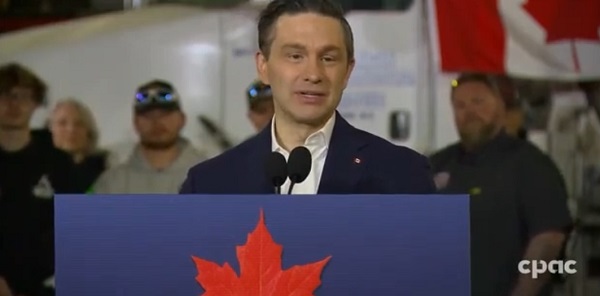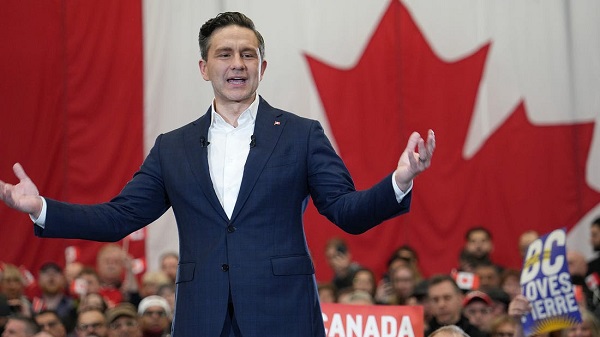Alberta
Alberta $8.8 billion education budget – plan to hire 3,000 new staff

Alberta’s government is committed to providing the support and services students need to succeed, and the resources schools need to support teachers and their staff. Budget 2023 increases the operating budget for the Ministry of Education by nearly $2 billion over the next three years. This will support hiring up to 3,000 education staff, including teachers, educational assistants, bus drivers and school support staff.
In the 2023-24 school year, Alberta will spend about $8.8 billion on education for students in kindergarten to Grade 12, the equivalent of $44 million for every day students are in school and an increase of more than five per cent.
“School authorities in Alberta deserve a government that will support them in addressing this year’s unprecedented enrolment growth, be properly resourced to address complex learning needs, and make transportation safer and more affordable. This investment addresses rising enrolment, helps meet students’ diverse needs and helps school authorities combat inflation.”
“Our children are our future and Budget 2023 ensures every child is supported in the classroom. By investing in our education system, we are ensuring students are prepared for success throughout their lives. While inflation continues to be a challenge, we are providing stable, predictable funding so school authorities can hire the staff they need to help students learn.”
Welcoming more students
Alberta’s booming economy led to one of its largest-ever population increases in 2022, which has meant more students in Alberta schools. Budget 2023 will provide increased funding to school authorities of $820 million specifically to support enrolment growth over the next three years.
This increased funding will begin the work to address class sizes by allowing school authorities to hire more teachers and classroom staff over the next three years. The increase will come through a variety of existing grants that include an enrolment component.
“Dozens of school projects are in the planning, design or construction phases right now across Alberta. Through Budget 2023, we’ll be adding approximately 20,000 more new and modernized student spaces that will help to ensure our kids get to go to school in their own communities in world-class facilities.”
Meeting students’ unique needs
Budget 2023 includes almost $1.5 billion in Learning Support funding for Alberta’s most vulnerable students, those with specialized learning needs and those requiring additional help at school. This includes specialized learning supports, program unit funding, English as a second language, refugee students, First Nations, Métis and Inuit.
On top of the funding increase for enrolment growth, Budget 2023 also includes targeted funding of $126 million over three years to increase staffing. This funding will allow school authorities to hire more educational assistants or increase their hours, provide more training opportunities for staff and/or hire specialists such as counsellors, psychologists, interpreters and more teachers.
These additional supports will give schools the ability to work more closely with students who have diverse learning needs, such as those with disabilities or those learning English as an additional language. This new funding will be delivered through a new targeted grant to school authorities. Overall, Budget 2023 includes almost $1.5 billion in Learning Support funding for Alberta’s most vulnerable students, those with specialized learning needs and those requiring additional help at school.
To help close learning gaps caused by the pandemic, Alberta’s government will spend an additional $20 million over the next two years to assist students in grades 1 to 5. This increased funding builds off previous successes to help students regain literacy and numeracy skills.
Increasing affordability for transportation
School authorities will also receive an additional $414 million over the next three years through Budget 2023 to support increased transportation funding that will result in more students having access to provincially funded transportation services. This increased funding will lower fees charged to thousands of parents, address rural ride times and cost pressures, and address rising costs for driver training.
Budget 2023 highlights
- Budget 2023 will increase staffing supports in complex classrooms by up to 10 per cent, which will enhance experiences and have positive effects on students’ personal and social development.
- The government is investing $50 million to support mental health pilot projects over the next two years to improve K-12 students’ well-being.
- Rising inflationary pressures are affecting school authorities and families. Budget 2023 will boost transportation funding to offset rising transportation costs like insurance, fuel and driver training. These costs are often passed on to Alberta families, so increasing the amount of funding available will decrease the parent fees associated with school transportation.
Budget 2023 secures Alberta’s future by transforming the health-care system to meet people’s needs, keeping our communities safe, and growing the economy with more jobs, quality education and continued diversification.
Alberta
Medical regulator stops short of revoking license of Alberta doctor skeptic of COVID vaccine

From LifeSiteNews
The Democracy Fund has announced that COVID-skeptic Dr. Roger Hodkinson will retain his medical license after a successful appeal against allegations of ‘unprofessional conduct’ by the College of Physicians and Surgeons of Alberta.
A doctor who called for officials to be jailed for being complicit in the “big kill” caused by COVID measures will get to keep his medical license thanks to a ruling by a Canadian medical regulator.
The Democracy Fund (TDF) announced in an April 4 press release that one of its clients, Dr. Roger Hodkinson, will retain his medical license after filing an appeal with the College of Physicians and Surgeons of Alberta (CPSA) over allegations of “unprofessional conduct regarding 17 public statements made in November 2020 and April 2021.”
Hodkinson had routinely argued against the dictates of public health and elected officials and “presented an alternative perspective on COVID-19, including the efficacy of masking and vaccines,” TDF noted.
In 2021, Hodkinson and Dr. Dennis Modry publicly blasted the then-provincial government of Alberta under Premier Jason Kenney for “intimidating” people “into compliance” with COVID-19 lockdowns.
In 2022, Hodkinson said that leaders in Canada and throughout the world have perpetrated the “biggest kill ever in medicine’s history” by coercing people into taking the experimental COVID injections and subjecting them to lengthy lockdowns.
These statements, among others, led the CPSA to claim that Hodkinson had promoted inaccurate or misleading information. “However, following negotiations with lawyers for The Democracy Fund, the CPSA limited its claims to arguing that Dr. Hodkinson’s comments violated the ethical code and extended beyond the scope of a general pathologist.”
Thus, Hodkinson did not “concede that any of his statements were false,” but “acknowledged that his criticisms of other physicians technically breached the Code of Ethics and Professionalism,” the group explained. “He also admitted that he should have clarified that his views were outside the scope of a general pathologist.”
Instead of having his license revoked, TDF stated that Dr. Hodkinson received a “caution” and will have to “complete an online course on influence and advocacy.”
“However, he did not concede that any of his statements were misinformation, nor did the tribunal make such a determination,” noted lawyer Alan Honner.
While Hodkinson received a slap on the wrist, a number of Canadian doctors have faced much harsher sanctions for warning about the experimental vaccines or other COVID protocols such as lockdowns, including the revocation of their medical licenses, as was the case with Dr. Mark Trozzi and others.
Some of Hodkinson’s warnings seem to have been vindicated by the current Alberta government under Premier Danielle Smith, who commissioned Dr. Gary Davidson to investigate the previous administration’s handling of COVID-19.
Davidson’s report, which was made public earlier this year, recommended the immediately halt of the experimental jabs for healthy children and teenagers, citing the risks the shots pose.
Alberta
Province introducing “Patient-Focused Funding Model” to fund acute care in Alberta

Alberta’s government is introducing a new acute care funding model, increasing the accountability, efficiency and volume of high-quality surgical delivery.
Currently, the health care system is primarily funded by a single grant made to Alberta Health Services to deliver health care across the province. This grant has grown by $3.4 billion since 2018-19, and although Alberta performed about 20,000 more surgeries this past year than at that time, this is not good enough. Albertans deserve surgical wait times that don’t just marginally improve but meet the medically recommended wait times for every single patient.
With Acute Care Alberta now fully operational, Alberta’s government is implementing reforms to acute care funding through a patient-focused funding (PFF) model, also known as activity-based funding, which pays hospitals based on the services they provide.
“The current global budgeting model has no incentives to increase volume, no accountability and no cost predictability for taxpayers. By switching to an activity-based funding model, our health care system will have built-in incentives to increase volume with high quality, cost predictability for taxpayers and accountability for all providers. This approach will increase transparency, lower wait times and attract more surgeons – helping deliver better health care for all Albertans, when and where they need it.”
Activity-based funding is based on the number and type of patients treated and the complexity of their care, incentivizing efficiency and ensuring that funding is tied to the actual care provided to patients. This funding model improves transparency, ensuring care is delivered at the right time and place as multiple organizations begin providing health services across the province.
“Exploring innovative ways to allocate funding within our health care system will ensure that Albertans receive the care they need, when they need it most. I am excited to see how this new approach will enhance the delivery of health care in Alberta.”
Patient-focused, or activity-based, funding has been successfully implemented in Australia and many European nations, including Sweden and Norway, to address wait times and access to health care services, and is currently used in both British Columbia and Ontario in various ways.
“It is clear that we need a new approach to manage the costs of delivering health care while ensuring Albertans receive the care they expect and deserve. Patient-focused funding will bring greater accountability to how health care dollars are being spent while also providing an incentive for quality care.”
This transition is part of Acute Care Alberta’s mandate to oversee and arrange for the delivery of acute care services such as surgeries, a role that was historically performed by AHS. With Alberta’s government funding more surgeries than ever, setting a record with 304,595 surgeries completed in 2023-24 and with 310,000 surgeries expected to have been completed in 2024-25, it is crucial that funding models evolve to keep pace with the growing demand and complexity of services.
“With AHS transitioning to a hospital-based services provider, it’s time we are bold and begin to explore how to make our health care system more efficient and manage the cost of care on a per patient basis. The transition to a PFF model will align funding with patient care needs, based on actual service demand and patient needs, reflecting the communities they serve.”
“Covenant Health welcomes a patient-focused approach to acute care funding that drives efficiency, accountability and performance while delivering the highest quality of care and services for all Albertans. As a trusted acute care provider, this model better aligns funding with outcomes and supports our unwavering commitment to patients.”
“Patient-focused hospital financing ties funding to activity. Hospitals are paid for the services they deliver. Efficiency may improve and surgical wait times may decrease. Further, hospital managers may be more accountable towards hospital spending patterns. These features ensure that patients receive quality care of the highest value.”
Leadership at Alberta Health and Acute Care Alberta will review relevant research and the experience of other jurisdictions, engage stakeholders and define and customize patient-focused funding in the Alberta context. This working group will also identify and run a pilot to determine where and how this approach can best be applied and implemented this fiscal year.
Final recommendations will be provided to the minister of health later this year, with implementation of patient-focused funding for select procedures across the system in 2026.
-

 Courageous Discourse2 days ago
Courageous Discourse2 days agoEurope Had 127,350 Cases of Measles in 2024
-

 Podcasts1 day ago
Podcasts1 day agoTrump’s Tariffs: The US, Canada, and the rest of the world
-

 2025 Federal Election2 days ago
2025 Federal Election2 days agoPierre Poilievre Declares War on Red Tape and Liberal Decay in Osoyoos
-

 2025 Federal Election1 day ago
2025 Federal Election1 day agoMark Carney Comes to B.C. and Delivers a Masterclass in Liberal Arrogance
-

 Business1 day ago
Business1 day agoTrump threatens additional 50% tariffs on China, urges ‘patience’
-

 Alberta1 day ago
Alberta1 day agoProvince introducing “Patient-Focused Funding Model” to fund acute care in Alberta
-

 2025 Federal Election1 day ago
2025 Federal Election1 day agoPoilievre to invest in recovery, cut off federal funding for opioids and defund drug dens
-

 Business2 days ago
Business2 days agoTrump says tariffs on China will remain until trade imbalance is corrected





